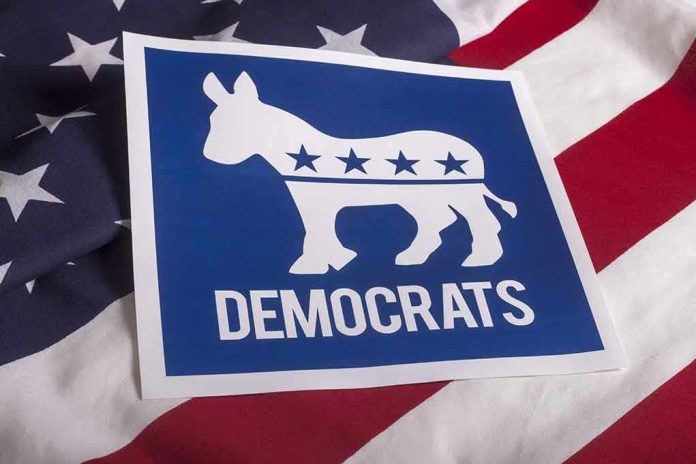
Democrats are facing a significant shift in voter registration, losing millions while Republicans gain strength nationwide.
Story Overview
- Democrats have lost over 2 million registered voters since 2020.
- Republicans gained slightly more than the Democratic loss in the same period.
- Independent/unaffiliated voter registrations have reached historic highs.
- The shift has contributed to Republican electoral victories in recent elections.
Massive Shift in Voter Registration
Between 2020 and 2024, the Democratic Party experienced a dramatic loss of over 2 million registered voters, while the Republican Party gained a slightly higher number. This nationwide shift, highlighted by The New York Times, has been observed in more than two dozen states that track party affiliation. This trend has played a crucial role in the Republican victories in 2024, where they secured both the House and Senate and saw President Trump win key battleground states.
This voter registration shift is not only a reflection of changing party loyalties but also indicative of broader political realignments. Historically, both parties have seen cyclical changes in voter registration, yet the current trend is marked by a significant rise in independent or unaffiliated voters, now making up nearly half of new registrations. This rise suggests a growing dissatisfaction with the traditional two-party system, a sentiment that could reshape future political landscapes.
Criticism and Oversight
While the New York Times emphasized the loss for Democrats and gains for Republicans, critics argue that the focus should also be on the surge of independent voters. They contend that this aspect is often underreported, despite its potential to impact future elections significantly. Independent and third-party advocates are calling attention to this trend, suggesting that the real story lies in the erosion of traditional party loyalty and the increasing leverage of unaffiliated voters.
The implications of these shifts are considerable. In the short term, Republicans are likely to enjoy legislative dominance, while Democrats are urged to reassess their strategies, particularly in re-engaging disaffected voters. Long-term effects could see further fragmentation of the political landscape, encouraging new approaches to governance and coalition-building, as well as a possible restructuring of the party system as we know it.
Political Landscape: A New Era
As the political scene evolves, the rise of independent voters cannot be overlooked. The media, polling industries, and political strategies will need to adapt to this new reality. This shift represents not just a change in numbers but also a potential redefinition of political engagement and representation in the United States. Experts caution against oversimplifying these trends, highlighting the need for a nuanced understanding of voter behavior and its implications for future elections.
NYT: Another New 'Nightmare Scenario' Is Unfolding for Democrats
https://t.co/A77KZ37KcA— Townhall Updates (@TownhallUpdates) August 27, 2025
While Republicans celebrate their recent gains, Democrats face the challenge of repositioning themselves in a rapidly changing political environment. The current trends underscore the importance of acknowledging voter dissatisfaction with the status quo and the need for both major parties to address the issues driving voters away. As independents grow in influence, the political future remains uncertain, but one thing is clear: change is on the horizon.
Sources:
Hey New York Times, Your Party Voter Registration Story: Pretty Bad







